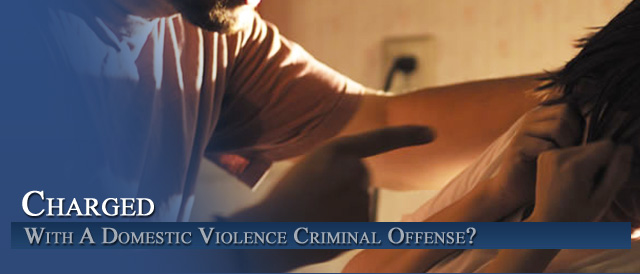




Colorado Domestic Violence Cases – How Do I Get Off Of This Ride? Discharge Standards, Risk Categories and the Completion of Court Ordered Mandated Treatment – Part I
To fully understand what RISK CATEGORY the Colorado Domestic Violence Offender is placed in – the individual must understand how so called “Approved Providers” measure risk
Here are some of the areas of concern where therapists focus on the task of measuring risk.
Understanding these areas is the key to challenging the provider’s assessment of the Colorado Domestic Violence probationer… that is – someone who is convicted of a Colorado Domestic Violence criminal acts. Knowledge is power.
Remember this is written for the therapist and the probation officer!
The Domestic Violence Risk And Needs Assessment Instrument (DVRNA)
Placement in treatment shall be determined by the pre-sentence or post-sentence intake evaluation in conjunction with the Domestic Violence Risk and Needs Assessment Instrument
Assessment Instrument (DVRNA) (Refer to DVRNA)
The literature demonstrates that there are significant risk factors that should be considered in working with domestic violence offenders. In the absence of a researched instrument that clearly identifies the ongoing risk of offenders during treatment;
…..the following are some of the risk factors identified in the literature that shall be considered in treatment planning and ongoing Treatment Plan Review.
These risk factors may not be present at the initial evaluation, but may become evident during treatment resulting in a need for a change in treatment planning and intensity of treatment. Additionally, mitigation of these risk factors may indicate a need for reduction in intensity of treatment.
Once the offender has been evaluated according to Standard 4.0 Offender Evaluation, the Approved Provider will complete the DVRNA. When identifying a risk factor for an offender, the Approved Provider is required to identify the source from which the information is drawn.
Examples of required sources include:
… criminal history,
….law enforcement report,
….publicly released victim report/impact statement,
….Division of Behavioral Health (DBH) approved substance online pharmacy abuse screening instrument,
….offender clinical interview,
….mental health screen,
….and other information as required in Offender Evaluation Standard 4.05.
Victim Information
Scoring Method Used in Determining Intensity of Treatment:
Some risk factors on the DVRNA are identified as Critical or Significant and result in minimum placement for initial treatment. The actual placement level may be higher depending on the total number of domains in which there are risk factors.
Offenders who do not have more than one risk factor as identified in the DVRNA may be considered for the Level A intensity of treatment. This one risk factor cannot be identified as Critical or Significant.
The domains on the DVRNA are identified by letter (A-N). The risk factors listed under the domains are numbered. When scoring the DVRNA the maximum score for a domain is one. The maximum score on the DVRNA is therefore fourteen (14).
Specific risk factors listed under the DVRNA do not each count for one point.
Offenders who have two to four domains in which risk factors are present or any Significant Risk Factor as identified in the DVRNA, shall be placed in Level B intensity of treatment.
Offenders who have five or more domains in which risk factors are present or any risk factor as identified as a Critical Risk Factor in the DVRNA shall be placed in Level C intensity of treatment.
If the clinical and professional judgment of the MTT indicates a need to override the criteria listed above in A through D, there shall be consensus of the MTT and the written justification shall be placed in the offender’s file
DVRNA Risk Factors
Risk increase or mitigation
The following DVRNA domains of risk factors (A-N) shall be taken into consideration throughout an offenders treatment. Significant and Critical Risk Factors that warrant initial Level B or Level C placement are listed first for ease of use with this instrument.
A. Prior domestic violence related incidents (Any of the following are Significant Risk Factors that indicate initial treatment placement in LEVEL B
This domain applies only to adult criminal history.
1. Prior domestic violence conviction -Critical Risk Factor that indicates initial treatment placement in Level C
2. Violation of an order of protection.
3. Past or present civil domestic violence related protection orders against offender.
4. Prior arrests for domestic violence.
5. Prior domestic violence incidents not reported to criminal justice system.
B. Drug or alcohol abuse
(Any of the following are Significant Risk Factors that indicate initial treatment placement in Level B at a minimum.). Requires use of a Division of Behavioral Health approved screening instrument(s) and/or self-report or recent illegal activity involving substance abuse to determine drug/alcohol abuse — with emphasis on most recent 12 months.
1. Substance abuse/dependence within the past 12 months.
2. History of substance abuse treatment within the past 12 months or two or more prior drug or alcohol treatment episodes during lifetime.
3. Offender uses illegal drugs or illegal use of drugs.
C. Mental health issues
(Any of the following are Significant Risk Factors that indicate initial treatment placement in Level B at a minimum.)
1. Existing Axis I or II diagnosis (excluding V codes)
2. Personality disorder with anger, impulsivity, or behavioral instability.
3. Severe psychopathology.
4. Recent psychotic and/or manic symptoms.
5. Psychological/psychiatric condition currently unmanaged
6. Noncompliance with prescribed medications and mental health treatment
7. Exhibiting symptoms that indicate the need for a mental health evaluation
D. Suicidal/homicidal Issues
1. Serious homicidal or suicidal ideation/intent within the past year (This is a Critical Risk Factor that indicates initial treatment in Level C)
2. Ideation within the past 12 months.
3. Credible threats of death within the past 12 months.
4. Victim reports offender has made threats of harming/killing her (female victims in heterosexual relationships.
E. Use and/or threatened use of weapons in current or past offense or access to firearms
1. Gun in the home in violation of a civil or criminal court order. (This is a Critical Risk Factor that indicates initial treatment in Level C)
2. Use and/or threatened use of weapons in current or past offense. (This is a Critical Risk Factor that indicates initial treatment in Level C)
3. Access to firearms.
F. Criminal history – non-domestic violence
(both reported and unreported to criminal justice system). This domain applies only to adult criminal history.
1. Offender was on community supervision at the time of the offense. (This is a Critical Risk Factor that indicates initial treatment in Level C.)
2. Offender has a prior arrest for assault, harassment, or menacing. If there have been two or more arrests, it is a Significant Risk Factor that indicates initial treatment in Level B at a minimum.
3. Prior non-domestic violence convictions.
4. Past violation(s) of conditional release or community supervision.
5. Past assault of strangers, or acquaintances.
6. Animal cruelty/abuse .
G. Obsession with the victim
1. Stalking or monitoring.
2. Obsessive jealousy with the potential for violence, violently and constantly jealous, morbid jealousy.
H. Safety concerns
Information shall not be used if it compromises victim safety and confidentiality (Refer to Standard 5.04 II.).
1. Victim perception of safety/victim concerned for safety.
2. Victim (female victim in heterosexual relationship) believes offender is capable of killing her.
3. Offender controls most of victim’s daily activities.
4. Offender tried to choke victim.
5. Physical violence is increasing in severity.
6. Victim forced to have sex when not wanted.
7. Victim was pregnant at the time of the offense and offender knew this.
8. Victim is pregnant and offender has previously abused her during pregnancy.
I. Violence and/or threatened violence toward family members including child abuse (does not include intimate partners)
1. Current or past social services case(s)
2. Past assault of family members.
3. Children were present during the offense (in the vicinity).
J. Attitudes that support or condone spousal assault
1. Explicitly endorses attitudes that support or condone intimate partner assault.
2. Appears to implicitly endorse attitudes that support or condone intimate partner assault.
K. Prior completed or non-completed domestic violence treatment
L. Victim separated12 from offender within the previous six months
M. Unemployed
Unemployed is defined as not working at time of offense or at any time during intake or treatment and does not include offenders on public assistance, homemakers, students, or retirees
N. Involvement with people who have pro-criminal influence.
1. Some criminal acquaintances
The presence of some criminal acquaintances is associated with an opportunity for pro-criminal modeling, a concept that is considered a major risk factor
AND
2. Some criminal friends
Attachments to pro-criminal others is a well documented predictor of criminal behavior, with roots in both of the major explanatory theories in criminology: social control and social learning,
5.05 Development of Individualized Treatment Plan and Offender Contract
I. A Treatment Plan shall be implemented after the completion of the intake evaluation process. The individualized plan shall promote victim and community safety while identifying treatment goals for the offender.
The written Treatment Plan shall include goals that specifically address all clinical issues identified in the intake evaluation. The treatment goals shall be based on offender criminogenic needs, offender competencies, and identified risk factors. A Personal Change Plan and an Aftercare Plan shall be components of the Treatment Plan.
A. Personal Change Plan
The offender’s Personal Change Plan is a written plan for preventing abusive behaviors and developing healthy thoughts and behaviors. The offender shall design and implement this plan during treatment and utilize it after discharge.
B. Aftercare Plan
The offender’s Aftercare Plan is a written plan that demonstrates the ongoing utilization of the Personal Change Plan after treatment and components supporting that plan.
Other Articles of Interest:
- Colorado Domestic Violence Cases – How Do I Get Off Of This Ride? Discharge Standards and the Completion of Court Ordered Mandated Treatment – Part II
- Important Links in Colorado Domestic Violence Cases
- The Colorado Domestic Violence Multi-disciplinary Treatment Team (MTT) Approach to Mandatory Domestic Violence Treatment Requirements
- Colorado Criminal Domestic Violence Laws – Couple’s or Martial Counseling NOT Allowed in Domestic Violence Treatment Programs
- The New Colorado DV Treatment Standards












